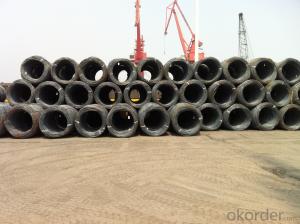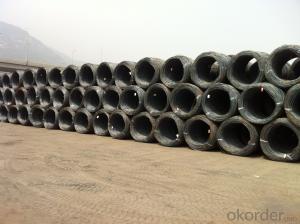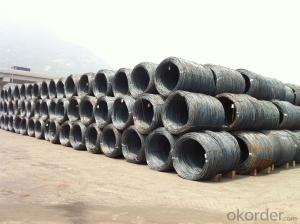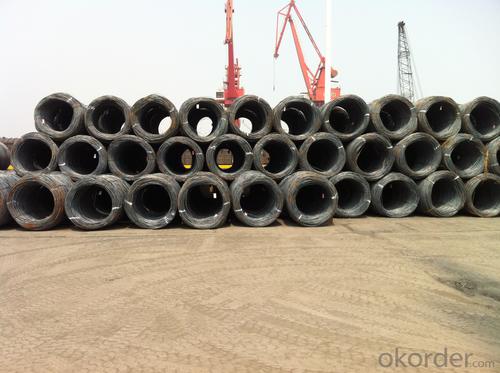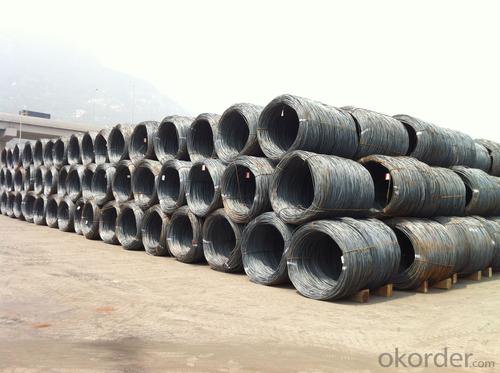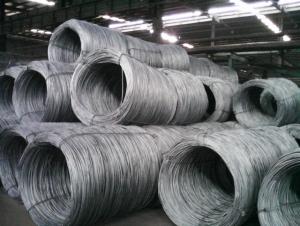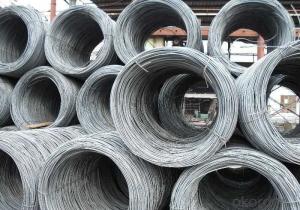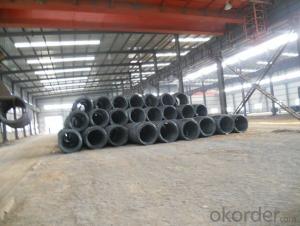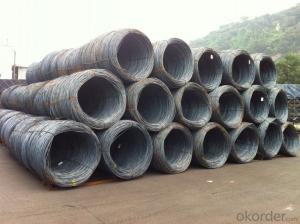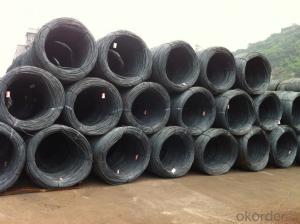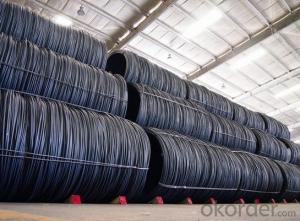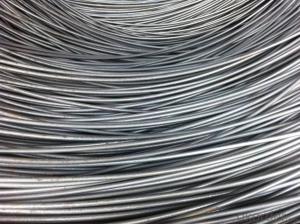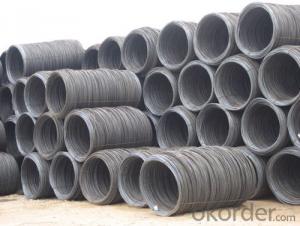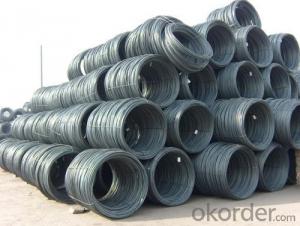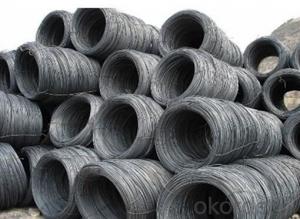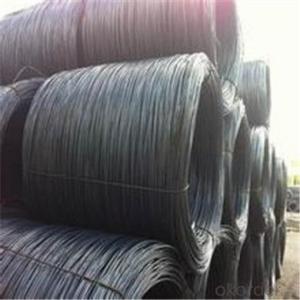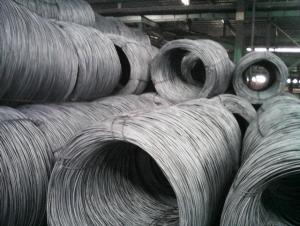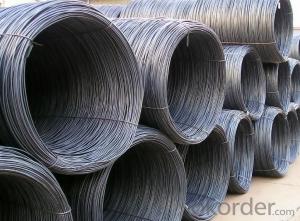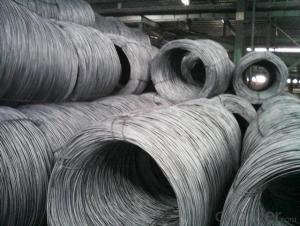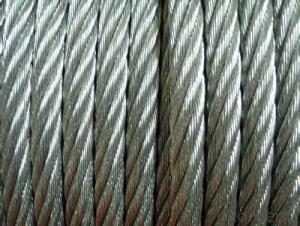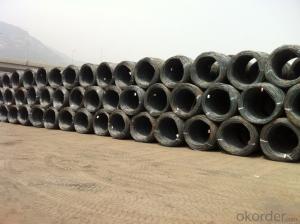Wire rods With High quality and Best Price
- Loading Port:
- Tianjin
- Payment Terms:
- TT OR LC
- Min Order Qty:
- 25 m.t.
- Supply Capability:
- 20000 m.t./month
OKorder Service Pledge
OKorder Financial Service
You Might Also Like
OKorder is offering high quality Hot Rolled Wire Rods at great prices with worldwide shipping. Our supplier is a world-class manufacturer of steel, with our products utilized the world over. OKorder annually supplies products to European, North American and Asian markets. We provide quotations within 24 hours of receiving an inquiry and guarantee competitive prices.
Product Applications:
Hot Rolled Wire Rods are ideal for structural applications and are widely used in the construction of buildings and the manufacturing, industries.
Product Advantages:
OKorder's Wire Rods are durable, strong, and resist corrosion.
Main Product Features:
· Premium quality
· Prompt delivery & seaworthy packing (30 days after receiving deposit)
· Corrosion resistance
· Can be recycled and reused
· Mill test certification
· Professional Service
· Competitive pricing
Product Specifications:
Manufacture: Hot rolled
Grade: SAE1006 – SAE1008
Certificates: ISO, SGS, BV, CIQ
Length: 6m – 12m, as per customer request
Packaging: Export packing, nude packing, bundled
Grade | Chemical Composition (%) | |||||
C | Mn | S | P | Si | B | |
SAE1006B | 0.03~O.07 | 0.32max | 0.045max | 0.040max | 0.30max | 0.0008min |
Mechanical properties | ||||||
Yield strength(N/mm2) | Tensile strength(N/mm2) | Elongation (%) | ||||
250-280 | 350-380 | ≥32 | ||||
Grade | Chemical Composition (%) | |||||
C | Mn | S | P | Si | B | |
SAE1008B | 0.10max | 0.3~0.50 | 0.050max | 0.040 max | 0.15max | 0.0008 min |
Mechanical properties | ||||||
Yield strength(N/mm2) | Tensile strength(N/mm2) | Elongation (%) | ||||
≥195 | 315-430 | ≥30 | ||||
FAQ:
Q1: Why buy Materials & Equipment from OKorder.com?
A1: All products offered byOKorder.com are carefully selected from China's most reliable manufacturing enterprises. Through its ISO certifications, OKorder.com adheres to the highest standards and a commitment to supply chain safety and customer satisfaction.
Q2: How do we guarantee the quality of our products?
A2: We have established an advanced quality management system which conducts strict quality tests at every step, from raw materials to the final product. At the same time, we provide extensive follow-up service assurances as required.
Q3: Can stainless steel rust?
A3: Stainless does not "rust" as you think of regular steel rusting with a red oxide on the surface that flakes off. If you see red rust it is probably due to some iron particles that have contaminated the surface of the stainless steel and it is these iron particles that are rusting. Look at the source of the rusting and see if you can remove it from the surface.
Images:
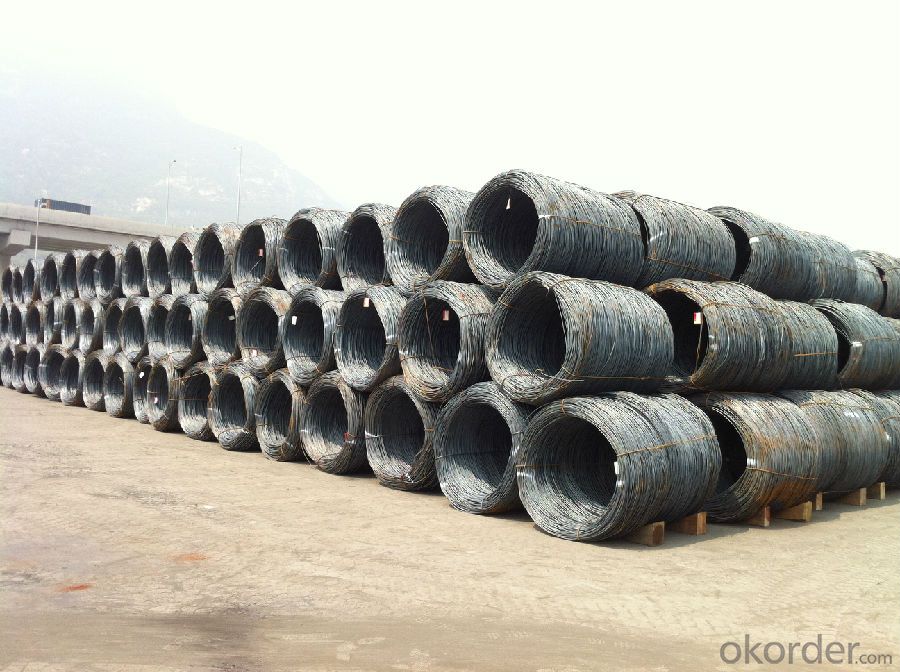

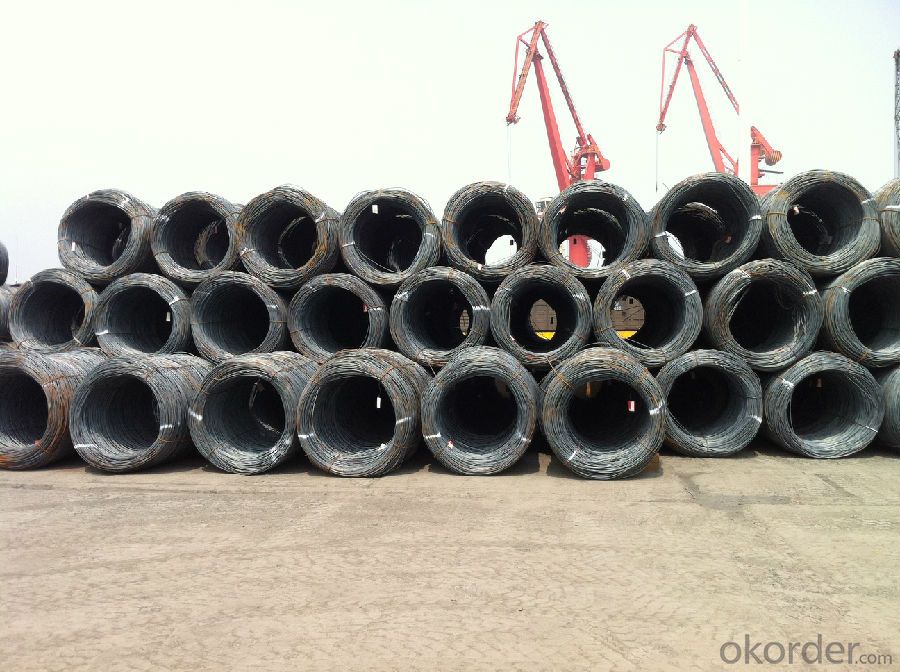
- Q: How are steel wire rods used in the manufacturing of bicycle spokes?
- Steel wire rods are used in the manufacturing of bicycle spokes by being drawn through a series of dies to achieve the desired diameter and strength. These rods are then cut into lengths, threaded at both ends, and attached to the bicycle hub and rim, providing the necessary support and tension to the wheel.
- Q: How is steel wire rod used in the manufacturing of wire forms for fishing nets?
- Steel wire rod is used in the manufacturing of wire forms for fishing nets as it serves as the primary material for creating the core structure of the nets. The wire rod is typically shaped and twisted into specific designs to form the framework and support system of the fishing net. Its strong and durable properties make it ideal for withstanding the tension and pressure exerted by water currents and the weight of captured fish, ensuring the longevity and effectiveness of the fishing net.
- Q: What are the different surface lubrication methods for steel wire rod?
- Some of the different surface lubrication methods for steel wire rod include dry drawing lubrication, oil-based lubrication, soap-based lubrication, and emulsion lubrication. These methods help to reduce friction and facilitate the wire drawing process, ensuring smooth and efficient production.
- Q: What are the major challenges in marketing steel wire rod products?
- One major challenge in marketing steel wire rod products is the intense competition in the market. There are numerous manufacturers and suppliers of steel wire rods, making it difficult to differentiate and stand out from the competition. Additionally, the industry is also highly price-sensitive, which puts pressure on companies to offer competitive pricing without compromising on quality. Another challenge is the fluctuating demand for steel wire rods, which is influenced by factors such as economic conditions, construction activities, and infrastructure development. This requires companies to have robust forecasting and inventory management systems in place to anticipate and meet customer demands effectively. Furthermore, marketing steel wire rods also involves identifying and targeting specific industries or applications that require these products, such as construction, automotive, and manufacturing, which requires thorough market research and strategic marketing efforts.
- Q: How is steel wire rod used in the manufacturing of wire cables?
- Steel wire rod is used as the primary raw material in the manufacturing of wire cables. It is first drawn into the desired diameter and then twisted or braided together to form a strong and durable cable. The high tensile strength and flexibility of steel wire rod make it ideal for various applications such as construction, automotive, and electrical industries, where wire cables are used for lifting, support, transmission of power, or as structural components.
- Q: How long is the shelf life of steel wire rod?
- The shelf life of steel wire rod is indefinite if stored properly.
- Q: How is steel wire rod used in the manufacturing of wire forms for sliding doors?
- Steel wire rod is used in the manufacturing of wire forms for sliding doors as it provides the necessary strength and durability required for these applications. The steel wire rod is shaped and formed into various wire forms such as tracks, brackets, and hinges, which are essential components of sliding doors. These wire forms help to ensure smooth and effortless movement of the doors, providing stability and support.
- Q: How does the yield strength of steel wire rod vary with different grades?
- The yield strength of steel wire rod varies with different grades as it is influenced by the chemical composition, heat treatment, and manufacturing processes used to produce the steel. Higher grade steel wire rods typically have a higher yield strength due to their increased carbon content and additional alloying elements, which enhance their strength and durability. Conversely, lower grade steel wire rods have a lower yield strength as they contain fewer alloying elements and have a lower carbon content.
- Q: How is steel wire rod used in the manufacturing of wire containers?
- Wire containers, which are widely utilized in logistics, warehousing, and transportation industries due to their durability, strength, and versatility, heavily rely on steel wire rod as a crucial component. To begin the manufacturing process, steel wire rod undergoes a series of procedures, including drawing, annealing, and coating, in order to transform it into wire. This wire is then shaped and welded according to the desired container design, whether it be a basket, cage, or pallet. The high tensile strength of steel wire rod guarantees that wire containers can endure heavy loads and avoid deformation, making them suitable for the storage and transportation of various goods. Furthermore, the durability of steel wire rod enables wire containers to withstand harsh environments, such as extreme temperatures and corrosive substances. The flexibility of steel wire rod also allows for customization of wire containers. Manufacturers can easily adjust the wire's diameter, length, and thickness to meet specific requirements. This adaptability enables the production of wire containers in different sizes and designs, ensuring their compatibility with a wide range of products and storage systems. Additionally, wire containers made from steel wire rod are lightweight, making them easier to handle and transport. This feature is particularly advantageous in industries that require frequent loading and unloading of goods. In conclusion, steel wire rod plays a vital role in the manufacturing of wire containers by providing the necessary strength, durability, and flexibility. Its utilization ensures the creation of reliable and efficient storage and transportation solutions for various industries.
- Q: How is steel wire rod used in the manufacturing of wire forms for security fencing?
- Steel wire rod is used in the manufacturing of wire forms for security fencing by being processed through various stages such as drawing, annealing, and coating to obtain the desired strength, flexibility, and corrosion resistance. This rod is then shaped and welded into different wire forms, such as mesh panels or barbed wire, which are essential components of security fencing.
Send your message to us
Wire rods With High quality and Best Price
- Loading Port:
- Tianjin
- Payment Terms:
- TT OR LC
- Min Order Qty:
- 25 m.t.
- Supply Capability:
- 20000 m.t./month
OKorder Service Pledge
OKorder Financial Service
Similar products
Hot products
Hot Searches
Related keywords
